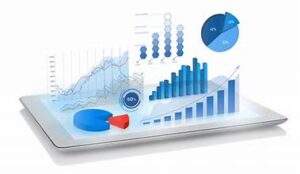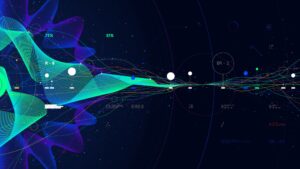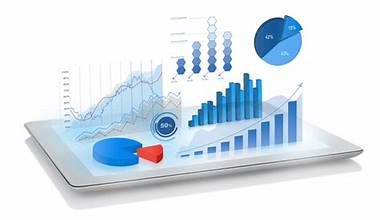In today’s data-driven world, the sheer volume and complexity of data have made it imperative for businesses and analysts to leverage sophisticated techniques to derive actionable insights. Advanced data visualization techniques are at the forefront of this transformation, reshaping how we interpret, analyze, and use data. This article explores how these techniques are influencing the future of data analysis and why they are essential for making informed decisions.
The Evolution of Data Visualization
Data visualization has come a long way from traditional charts and graphs. Historically, pie charts, bar graphs, and line graphs were the primary tools for representing data. While these methods still hold value, the demand for more dynamic and interactive visualizations has led to the development of advanced techniques that offer deeper insights and a more engaging user experience.
1. Interactive Dashboards
Interactive dashboards are a significant advancement in data visualization. They provide users with the ability to explore data dynamically, allowing them to filter, drill down, and interact with various data points in real-time. Tools like Tableau and Power BI have revolutionized how businesses approach data analysis by enabling users to customize their dashboards and view data from multiple perspectives. This interactivity helps in uncovering trends and patterns that static charts might miss.
2. Geospatial Analysis
Geospatial data visualization is another powerful technique that integrates location-based data with visualization tools. By mapping data onto geographic regions, organizations can gain insights into spatial patterns and relationships. For example, heat maps and choropleth maps can illustrate how different variables change across regions, aiding in decisions related to market expansion, resource allocation, and logistics. Geographic Information Systems (GIS) technology enhances this capability by providing detailed and interactive maps.
3. Augmented Reality (AR) and Virtual Reality (VR)
Augmented Reality (AR) and Virtual Reality (VR) are emerging as transformative tools in data visualization. AR overlays digital information onto the real world, while VR creates immersive environments where users can interact with data in three dimensions. These technologies offer new ways to visualize complex data sets, making them more comprehensible and engaging. For instance, VR can be used to create immersive simulations for data analysis, allowing users to explore data in a more intuitive and interactive manner.
4. Predictive Analytics and Machine Learning
Predictive analytics and machine learning have revolutionized data visualization by integrating advanced algorithms that forecast future trends based on historical data. Visualizations that incorporate predictive models can highlight potential future scenarios, helping businesses anticipate challenges and opportunities. For example, sales forecasts displayed through dynamic visualizations can assist companies in strategizing inventory management and marketing campaigns.
5. Data Storytelling
Data storytelling combines visualization with narrative techniques to present data in a compelling and understandable manner. Instead of merely displaying data, data storytelling involves creating a narrative that guides the audience through the data’s insights and implications. Effective data storytelling uses visual elements like infographics, interactive charts, and annotated graphs to convey a cohesive message. This approach helps in making complex data more relatable and easier to grasp for stakeholders.
The Impact of Advanced Visualization Techniques
1. Improved Decision-Making
Advanced data visualization techniques enhance decision-making by providing clearer and more actionable insights. Interactive dashboards, for example, allow decision-makers to explore different scenarios and make informed choices based on real-time data. By visualizing data in more sophisticated ways, organizations can identify trends, detect anomalies, and understand correlations that might otherwise go unnoticed.
2. Enhanced Communication
Visualizations that incorporate advanced techniques make it easier to communicate complex data findings to diverse audiences. Whether it’s presenting to executives, clients, or the general public, well-designed visualizations can simplify intricate data and highlight key points effectively. This clarity improves understanding and facilitates better discussions around data-driven decisions.
3. Increased Engagement
Engaging visualizations capture attention and encourage exploration. Advanced techniques like AR and VR offer interactive and immersive experiences that make data analysis more engaging. By providing users with interactive tools and dynamic views, organizations can foster greater interest and involvement in data-driven initiatives.
4. Greater Insight Extraction
Advanced visualization techniques enable deeper analysis of data. For instance, predictive analytics can reveal future trends, while geospatial analysis can uncover location-based patterns. By utilizing these techniques, organizations can extract more meaningful insights and drive strategic decisions that are informed by comprehensive data analysis.
Challenges and Considerations
While advanced data visualization techniques offer numerous benefits, they also come with challenges. Ensuring data accuracy, managing data privacy, and maintaining user-friendly interfaces are critical considerations. Additionally, the complexity of some techniques may require specialized skills and tools, which can be a barrier for smaller organizations.
1. Data Accuracy and Quality
Maintaining the accuracy and quality of data is crucial for effective visualization. Advanced techniques rely on accurate and up-to-date data to provide reliable insights. Organizations must implement robust data management practices to ensure the integrity of their visualizations.
2. Privacy and Security
With the increasing use of interactive and geospatial visualizations, protecting sensitive data is essential. Organizations must adhere to data privacy regulations and implement security measures to safeguard information from unauthorized access.
3. Usability and Accessibility
Advanced visualizations should be designed with usability and accessibility in mind. Ensuring that visualizations are intuitive and accessible to users with different abilities can enhance their effectiveness and impact.
Conclusion
Advanced data visualization techniques are shaping the future of data analysis by providing more interactive, insightful, and engaging ways to interpret data. From interactive dashboards to augmented reality, these techniques are enhancing decision-making, communication, and insight extraction. As technology continues to evolve, the role of data visualization will become increasingly important in helping organizations navigate the complexities of the data-driven world.



